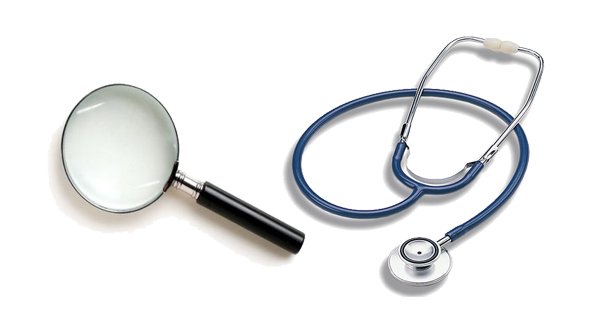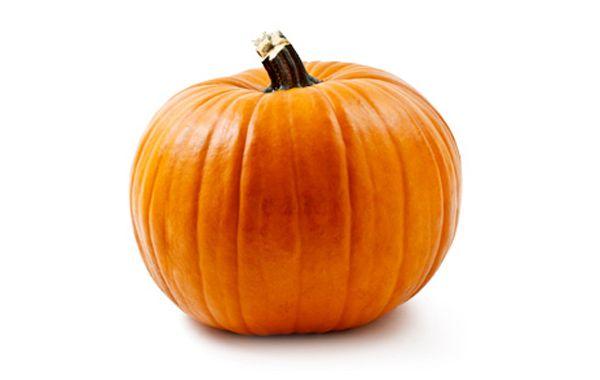In this week’s case study, Dr. Detective meets a young man with mysterious yellowing skin and discovers a scary side-effect of the Halloween pumpkin. Is it jaundice and liver dysfunction? Or just too much carotine?
Eat less and exercise more. It’s generally a great prescription for improving health and improving body composition. However, it doesn’t always work.
Even with an awesome exercise plan and a rock-solid diet, some people suffer from mysterious symptoms and complaints that seem puzzling, given how much effort they put into their fitness and health.
When we meet clients who have problems that exercise and nutrition — not to mention their own doctors — can’t seem to solve, we know there are only a few experts on the planet to turn to. One of them is Spencer Nadolsky.
Dr. Nadolsky is a doctor of osteopathic medicine who’s also studied exercise physiology and nutrition. An academic All-American wrestler in university, he’s still an avid exerciser and brilliant physician who practices what he preaches to patients -– treating preventable diseases first with lifestyle modifications (instead of prescription drugs).
When clients have nowhere else to turn, Dr. Nadolsky turns from a cheerful, sporty doctor into a meticulous, take-no-prisoners forensic physiologist. He pulls out his microscope, analyzes blood, saliva, urine, lifestyle – whatever he has to, in order to solve the medical mystery.
When Dr. Nadolsky volunteered to work on a regular case study feature with us, we jumped at the chance. By following along with these fascinating cases, you’ll see exactly how a talented practitioner thinks. You’ll also learn how to improve your own health.
In today’s case, we meet a young man who does not feel mellow about turning yellow.

The client
In the fall, Steve, a 24-year-old male, came to my office for “yellow skin.”
Steve came into my clinic every once in a while for funny complaints that never amounted to much. So this time, when I saw his name on my daily roster, I couldn’t help but smile.
Of course I’d treat his concerns with the same respect as any other patient’s. But given our history, I figured this would be a matter of offering him some reassurance and then sending him on his way.
The client’s signs and symptoms
Steve had no real prior medical problems – unless you count mild hypochondriasis. (That’s the “disease” where the patient thinks he is sick when in fact he’s perfectly healthy.) Ironically, Steve was a real fitness buff who cared about his health more than 99.9% of the general population.
We sat down and I asked him about the problem. His skin was turning yellow, he explained, especially the skin on his hands. His friends had begun to comment on it. For two months, the yellow tinge had been becoming more and more noticeable.
“I’m afraid I’m going into liver failure!” he confessed.
Now, that would be serious! My detective’s nose started getting itchy.
At first glance I didn’t notice any obvious skin yellowing. Compared to one of my patients, who had pancreatic cancer, and whose skin had turned as bright as an amber light, Steve looked pretty normal to me. But yellowing skin can indicate significant underlying health problems, so I needed to take it seriously.
| Signs / Symptoms | My thoughts – potential issues |
|---|---|
| Yellowing skin | Sometimes thyroid related, sometimes results from eating too many carrots. Many times liver/bile related. |
Steve’s vital signs suggested he was in perfect health.
Height: 6 feet
Weight: 185 pounds
Waist circumference: 32 inches
Blood pressure: 118/75
Pulse: 65
Oh – and he also had a great smile. I wished all my patients could be like him.
I wanted to know more about Steve’s symptoms. Had there been changes in his recent lifestyle?
“Nothing’s new,” he said.
He hadn’t started any supplements or medications since his skin changes began. And he certainly wasn’t drinking. That ruled out two of the most obvious causes. Supplements and alcohol can affect the liver, and potentially lead to yellowing of the skin. But in his case, that clearly wasn’t going on.
Steve reported no abdominal pains, no changes in his stool color, and no gastrointestinal issues.
I tried my final hypothesis. “Are you eating lots of carrots?” I asked. Although it may sound strange, carrots in excess can dye the skin yellow. Their high concentration of carotene is the reason. Normally, the body converts the carotene to vitamin A, but it’s possible – though unusual – to overload the system.
“No,” he said. “I hate carrots.”
The history wasn’t helping me, so I decided to move on to the physical exam.
On closer inspection, I could see a slight yellow tinge to his skin, especially between his fingers and on his palms. These areas were the only places where the colour was really noticeable.
His eyes (sclera) were white, with absolutely no hue of yellow. That was a relief, since yellowing eyes can indicate a host of serious problems including cancer and liver damage.
Moving on to the rest of the exam, there were no remarkable findings. I pressed on his belly quite hard, especially in the right upper quadrant where the liver and gall bladder are located. No tenderness. No enlarged liver. Nothing.
I didn’t expect to find anything, but I told Steve we’d run a quick hepatic panel just to be certain. He booked his follow-up appointment and left.
The tests and assessments
Given Steve’s presentation, I wanted to get labs that were relevant to his liver/biliary system. So I ordered a CMP (comprehensive metabolic panel) and a few other liver tests.
Blood chemistry panel
These are Steve’s lab findings:
| Marker | Result | Lab Reference Range | Thoughts |
|---|---|---|---|
| Fasting glucose | 82 mg/dL | 65-99 | No signs of insulin/glucose issues. |
| AST | 21 IU/L | <35 | No signs of liver inflammation/damage. |
| ALT | 19 IU/L | 10-35 | No signs of liver inflammation/damage. |
| Albumin | 4.5 | 3.5-5 g/dl | No signs of liver inflammation/damage. |
| Alkaline phosphatase | 68 IU/L | 44-147 | No signs of biliary obstruction. |
| GGT | 30 IU/L | 15-80 | No signs of liver inflammation/damage. |
| Platelets | 280 x10^9/L | 150-400 | Good liver function. |
| Direct bilirubin | 0.2 mg/dL | <0.4 | Normal. Which means yellowing not from biliary system. |
| Total bilirubin | 0.5 mg/dL | 0.3-1 | Normal. Which means yellowing not from biliary system. |
| Prothrombin time | 12.5 seconds | 11.4-14.2 | Normal. This is a measure of how well your blood clots, but since prothombin is made in the liver, it can show liver function. |
What these numbers told me what that Steve didn’t have true jaundice, which results from high bilirubin levels.
Bilirubin is a breakdown product of blood. People turn yellow (or become jaundiced) when bilirubin increases in the system through disruptions in the biliary system or from increases in blood product breakdown. Steve wasn’t experiencing any of this, which was great news!
But if jaundice wasn’t the problem, what was was going on? Why were his fingers yellow?
Maybe someone had played a prank and put self-tanner in his soap.
Time to crack this crazy case! I needed to see the patient in person to discuss the lab results and see if I could ferret some more clues.
Steve’s second visit
Steve was nervous and also excited to talk to me about his results. I was glad to reassure him that his liver was absolutely fine.
But I swear he almost looked disappointed – as if he’d wanted something to be wrong!
“If it’s not my liver,” he said, “what the heck is wrong with me?”
I honestly didn’t know. So I returned to an already-rejected theory. “It could be carotenosis,” I said.
“But I already told you I hate carrots!” Steve said.
We sat there for a minute, feeling mutually stumped.
Then his face lit up the way mine does when the steakhouse waiter delivers my favourite Porterhouse.
“What about pumpkin?” he said.
Apparently, since it was autumn and canned pumpkin could be found everywhere, Steve had started making pumpkin Super Shakes on a daily basis. Yep, you read that right. Not just once or twice a week – but daily.
Aha! This explained everything. Pumpkin, like carrots, orange sweet potato, and winter squash, is a bright orange vegetable. These vegetables get their beautiful colour from their high concentration of carotenoids.
A nutritional powerhouse, rich in vitamins and antioxidants, pumpkin is also delicious -– baked, broiled, sautéed, stir-fried, made into pies and muffins –- and, yes, blended into Super Shakes. But most people eat it approximately once a year, on Thanksgiving.
As a good detective, I should have asked about pumpkin on Steve’s first visit, but to be honest, the possibility that he might be overdosing on it just didn’t occur to me. I didn’t think people (other than me) ate copious amounts of it.
I told Steve that all he needed to do if he wanted the yellowing to disappear was quit eating so much pumpkin.
“Is eating a lot of it dangerous?” he asked.
“No.” I replied. “Unless you consider the self-tan look dangerous.”
He laughed and told me he would be decreasing his pumpkin intake.

The prescription
Steve’s prescription was simple: Eat less pumpkin. That alone would decrease the amount of carotene going into his body.
While carotenosis is a harmless problem, some folks feel self-conscious about the way their skin looks because of it. If Steve was bothered by the slight yellowing, all he needed to do was decrease his intake of orange vegetables. Yellowing generally fades after a few months.
The outcome
Steve returned for a follow-up three months later. Having reduced his pumpkin gorging (he was now down to one can a week) his skin had become a more aesthetically pleasing colour to him.
Win-win! He was getting all the health benefits of pumpkin, without its peculiar side-effects.
Happy with this balance, he didn’t really need to do anything more.
Take-away
So what can we take away from Steve’s story?
- Jaundice is not the only possible cause of yellowing skin, but if you believe your skin is turning yellow, check with your doctor. Yellowing skin can indicate very serious problems that no one should ignore.
- Yellowing from too much carotene will spare your sclera (the whites of your eyes). Jaundice will not.
- Vegetables are good for you, and it’s great to eat lots of them. But too much of anything, even a healthy vegetable, can overload your system. Aim for variety as well as quantity of vegetables.
- Also be aware of what else you might be taking. Many people who supplement with multi-vitamins may be taking in a lot of beta-carotene already (look for it listed as “Vitamin A” on the label). A daily can of pumpkin plus a daily carotene-rich vitamin could also leave you looking a bit Oompa-Loompa-ish.
- If you want the spray-tan look, just eat lots of carrots and pumpkin.
Learn more
Want to get in the best shape of your life, and stay that way for good? Check out the following 5-day body transformation courses.
The best part? They're totally free.
To check out the free courses, just click one of the links below.




Share